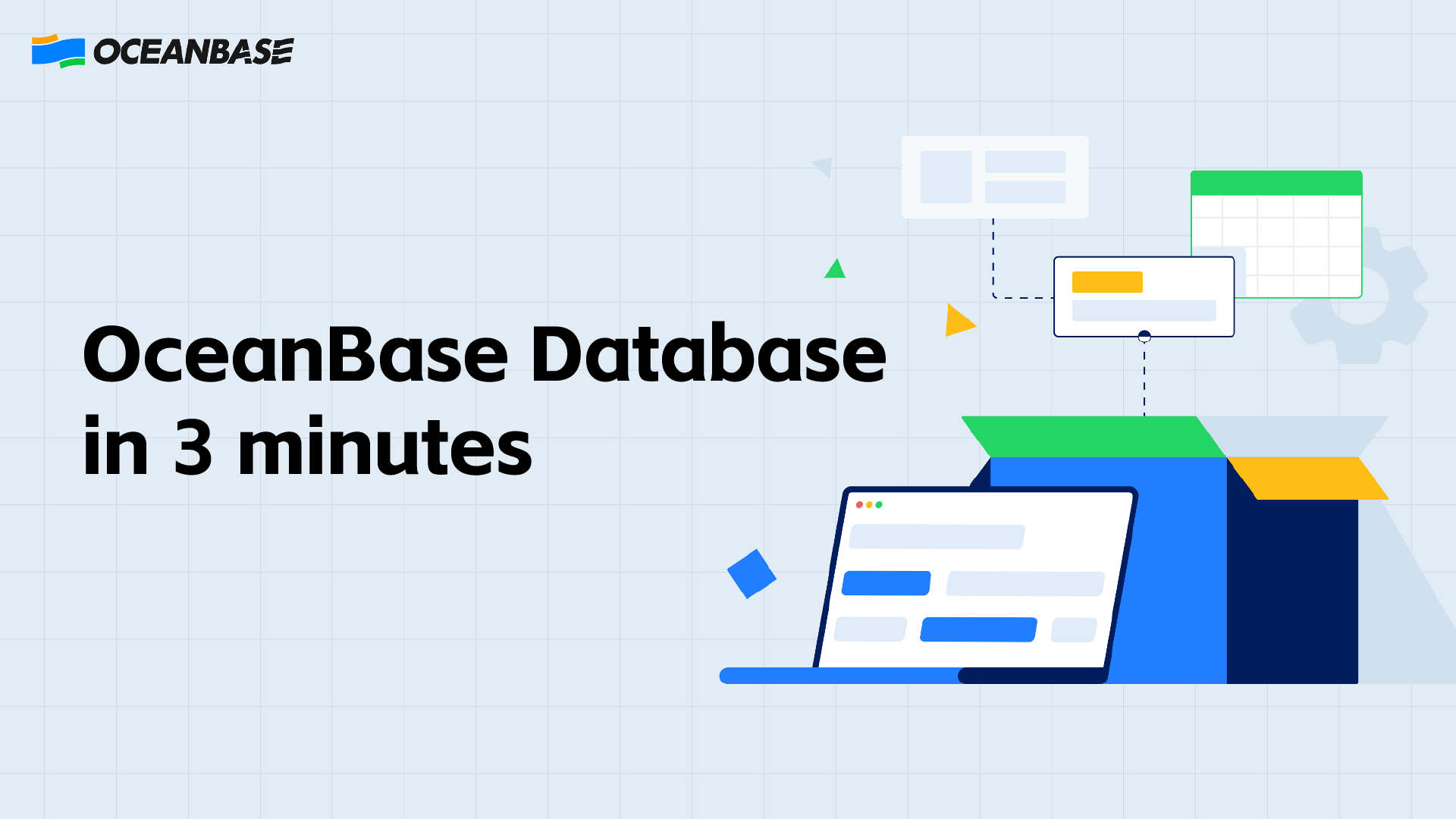
Products
High-quality database products to meet full lifecycle enterprise data management needs.
Resources
Various types of resources about OceanBase and the database industry
Docs
Rich content to meet the content demands of using products and solving product usage problems
View All
All Products
OceanBase Database
SQL - V4.3.5
Download PDF
Documentation updates What's New Overview Differences between Enterprise Edition and Community Edition System architecture Overview SQL data types Built-in functions System views Compatibility with MySQL Limitations Quick start with OceanBase Database Community Edition Before you begin Basic SQL operations (MySQL mode) Basic SQL operations (Oracle mode) Build a Python application Build a Java application Build a C application Build a Go application Build a Java application Build a C application Try out operational OLAP Try out parallel import and data compression Try out the multi-tenant feature Video tutorial Overview HA deployment solutions for OceanBase clusters Deployment process Deploy the Java SDK environment for OceanBase Database Overview Deploy an OceanBase cluster in a Kubernetes environment Install OceanBase Desktop Clear an OceanBase cluster Recommended configurations Overview Use OMS to migrate data from a MySQL database to a MySQL tenant of OceanBase Database Use mydumper and myloader to migrate data from a MySQL database to OceanBase Database Use DBCAT to migrate schemas from a MySQL database to OceanBase Database Use DataX to migrate table data from a MySQL database to OceanBase Database Use CloudCanal to migrate data from a MySQL database to OceanBase Database Use Canal to synchronize data from a MySQL database to OceanBase Database Use Flink CDC to synchronize data from a MySQL database to OceanBase Database Use ChunJun to migrate data from a MySQL database to OceanBase Database Use OMS to migrate data from a MySQL tenant of OceanBase Database to a MySQL database Use OMS to migrate incremental data from an Oracle tenant of OceanBase Database to a MySQL database Use DBCAT to migrate schemas from OceanBase Database to a MySQL database Use DataX to migrate table data from OceanBase Database to a MySQL database Use Canal to synchronize data from OceanBase Database to a MySQL database Use CloudCanal to migrate data from OceanBase Database to a MySQL database Use Flink CDC to migrate data from OceanBase Database to a MySQL database Use ChunJun to migrate data from OceanBase Database to a MySQL database Use OMS to migrate data from an Oracle database to a MySQL tenant of OceanBase Database Use OMS to migrate data from an Oracle database to an Oracle tenant of OceanBase Database Use DBCAT to migrate schemas from an Oracle database to OceanBase Database Use DataX to migrate table data from an Oracle database to OceanBase Database Use OMS to migrate data from an Oracle tenant of OceanBase Database to an Oracle database Use DBCAT to migrate schemas from OceanBase Database to an Oracle database Use DataX to migrate table data from OceanBase Database to an Oracle database Use OMS to migrate data from a DB2 LUW database to a MySQL tenant of OceanBase Database Use OMS to migrate data from a DB2 LUW database to an Oracle tenant of OceanBase Database Use DBCAT to migrate table schemas from a DB2 LUW database to OceanBase Database Use OMS to migrate data from a MySQL tenant of OceanBase Database to a DB2 LUW database Use OMS to migrate data from an Oracle tenant of OceanBase Database to a DB2 LUW database Use OMS to migrate data from a TiDB database to a MySQL tenant of OceanBase Database Use OMS to migrate data from a PostgreSQL database to a MySQL tenant of OceanBase Database Use DataX to migrate CSV files to OceanBase Database Import data by using the LOAD DATA statement Import data from SQL files to OceanBase Database Use OMS to migrate data from an OceanBase tenant to another of the same type Use OMS to migrate data from an OceanBase tenant to another of the same type in active-active disaster recovery scenarios Use obloader & obdumper to migrate data between MySQL tenants in OceanBase Database Use obloader & obdumper to migrate data from a MySQL tenant to an Oracle tenant in OceanBase Database Use obloader & obdumper to migrate data between Oracle tenants in OceanBase Database Use obloader & obdumper to migrate data from an Oracle tenant to a MySQL tenant in OceanBase Database Migrate data between tables Migrate resource units Export data using the OUTFILE statement Overview of direct load Log in to an OceanBase tenant Overview Cluster parameters Tenant introduction Tenant capacity Tenant types User tenant introduction Tenant system variables Overview Use columnstore replicas Traffic distribution Data distribution High availability overview Flashback queries Overview Introduction to physical backup and restore Experience physical backup and restore with simplified deployment Deploy NFS Update `access_id` and `access_key` information for the backup or archive path Backup and restore performance tuning Overview Cases


OceanBase, A Highly Scalable Database for Transactional, Analytical, and AI Workloads.
Resources
© OceanBase 2024. All rights reserved | Cloud Service Agreement | Privacy Policy | Legal | Security






 View Details
View Details Download
Download

